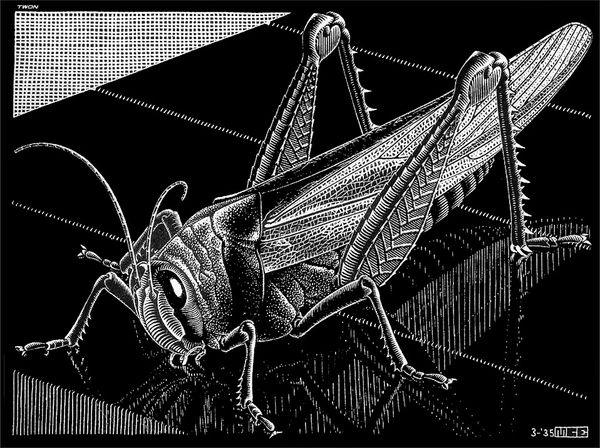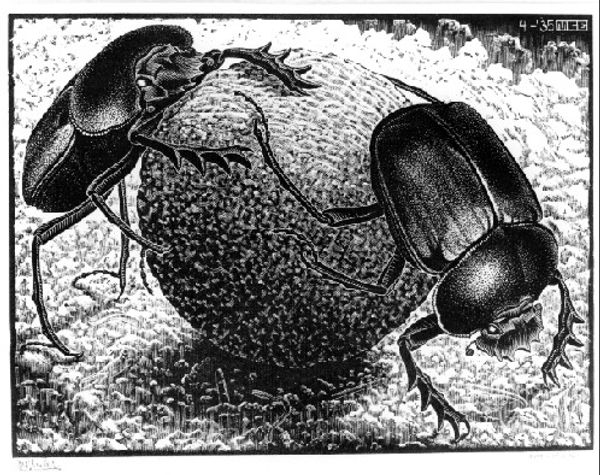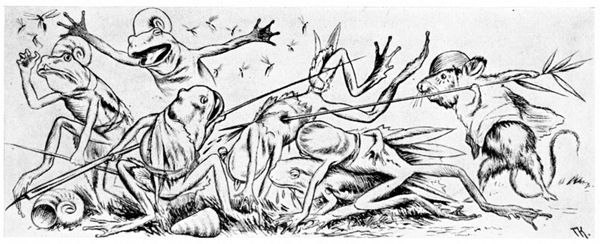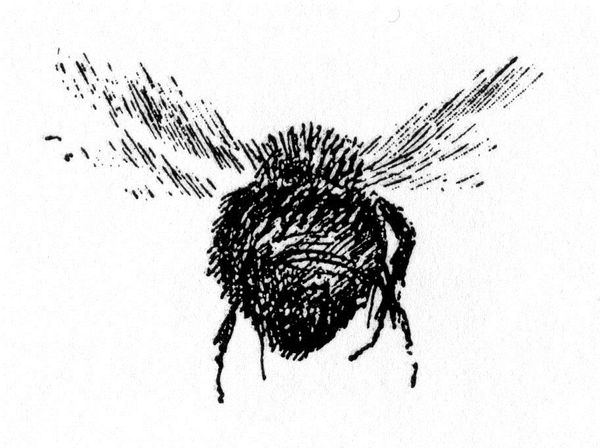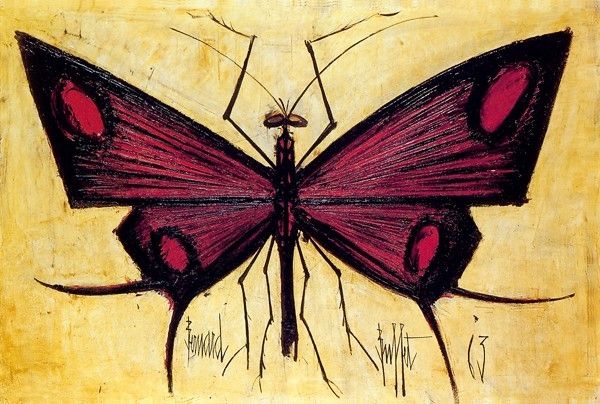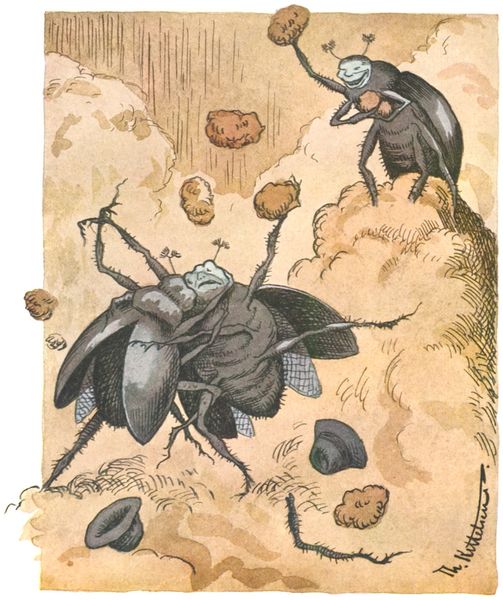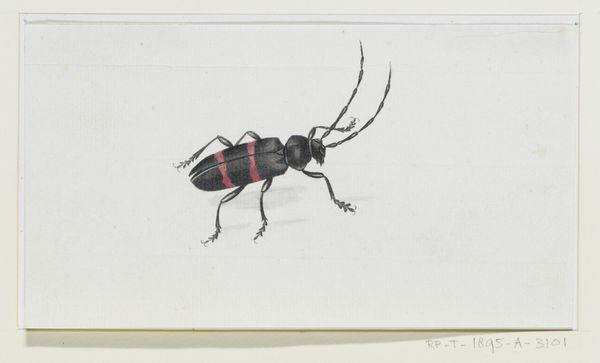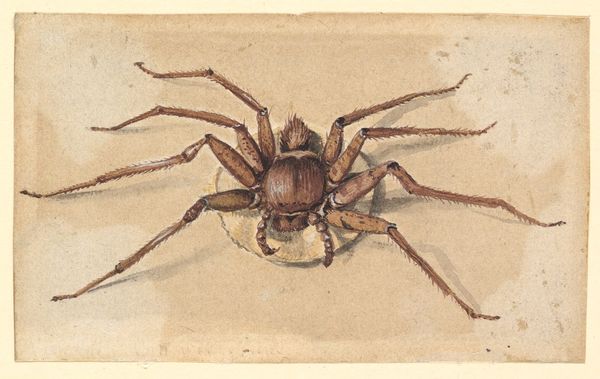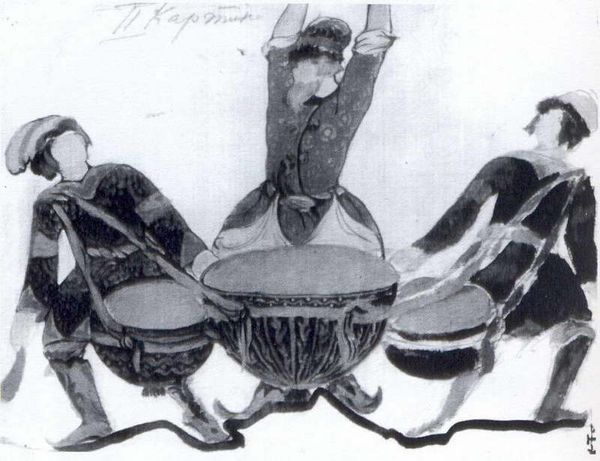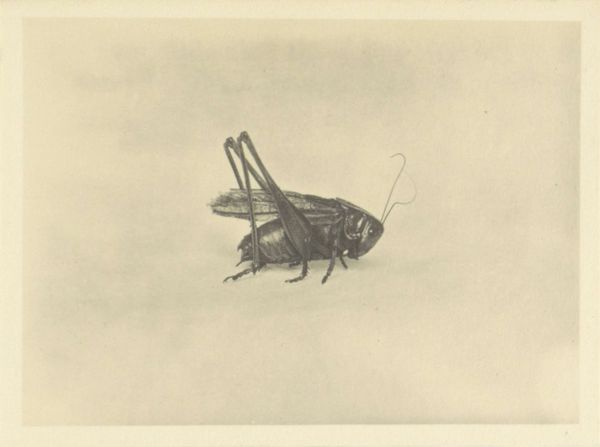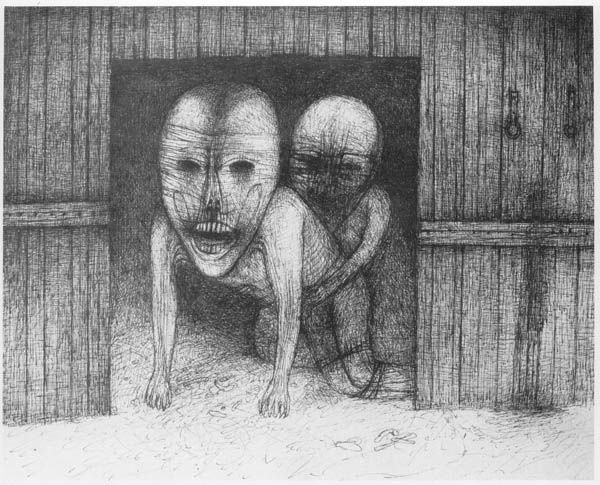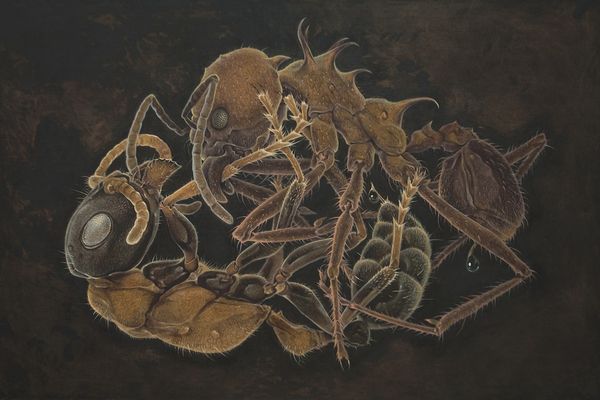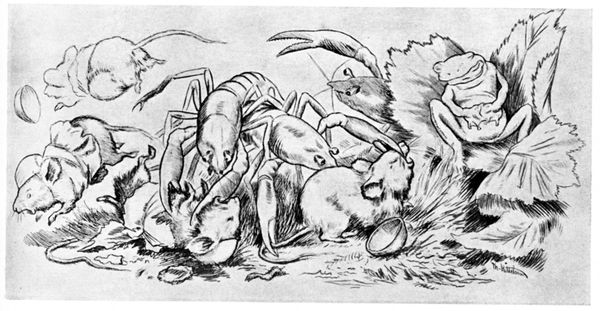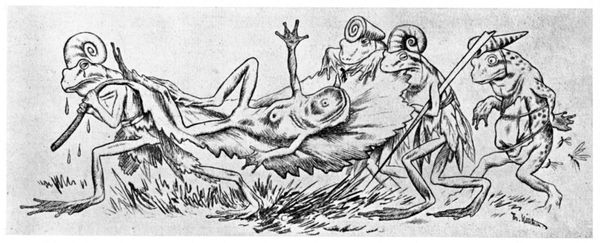
drawing, graphite
#
drawing
#
figuration
#
pencil drawing
#
graphite
#
graphite
Copyright: M.C. Escher,Fair Use
Curator: This is M.C. Escher’s "Ant," created in 1943 using graphite and drawing techniques. Editor: Striking. There’s an immediate textural tension between the meticulously rendered ant and the coarse, almost haphazard strokes of the background. It throws the ant into sharp relief, making it feel immense, almost monstrous. Curator: Interesting observation. Escher's choice of subject matter during wartime raises questions. Was he using the ant to represent industry and survival, common themes in propaganda at the time? Ants, after all, are paragons of collective effort. Editor: Or perhaps it's a meditation on scale. The intense detail given to this tiny creature forces us to examine it in a way we usually wouldn't. It disrupts our understanding of proportion. Curator: I agree. There's definitely a focus on decontextualization. It feels removed from any ecosystem, which prompts us to view the ant more objectively and perhaps, symbolically. In that light, does the piece celebrate perseverance or criticize the lack of individuality in mass behavior? Editor: Perhaps both. The composition contributes to this ambiguity. Note the strategic use of light and shadow along the insect’s thorax, creating a dramatic sculptural effect. The stark monochrome palette furthers the feeling of stark objectivity. Curator: Yes. And the year is interesting—1943, in the middle of World War II, at the height of social upheaval and sacrifice. There are numerous directions to go with these connections. The insect itself assumes greater societal and political dimensions. Editor: True. But stripped of historical context, the formal construction alone fascinates. The contrast highlights an insect of this size in the home. Escher challenges you to rethink the importance of life by re-envisioning something like an ant this magnificently. Curator: Absolutely. And the historical, social factors encourage and expand interpretations beyond the form, which for Escher might have even been the point. Editor: Precisely. This close examination changes perception—about form and concept alike—revealing beauty, threat, and symbolism simultaneously.
Comments
No comments
Be the first to comment and join the conversation on the ultimate creative platform.
